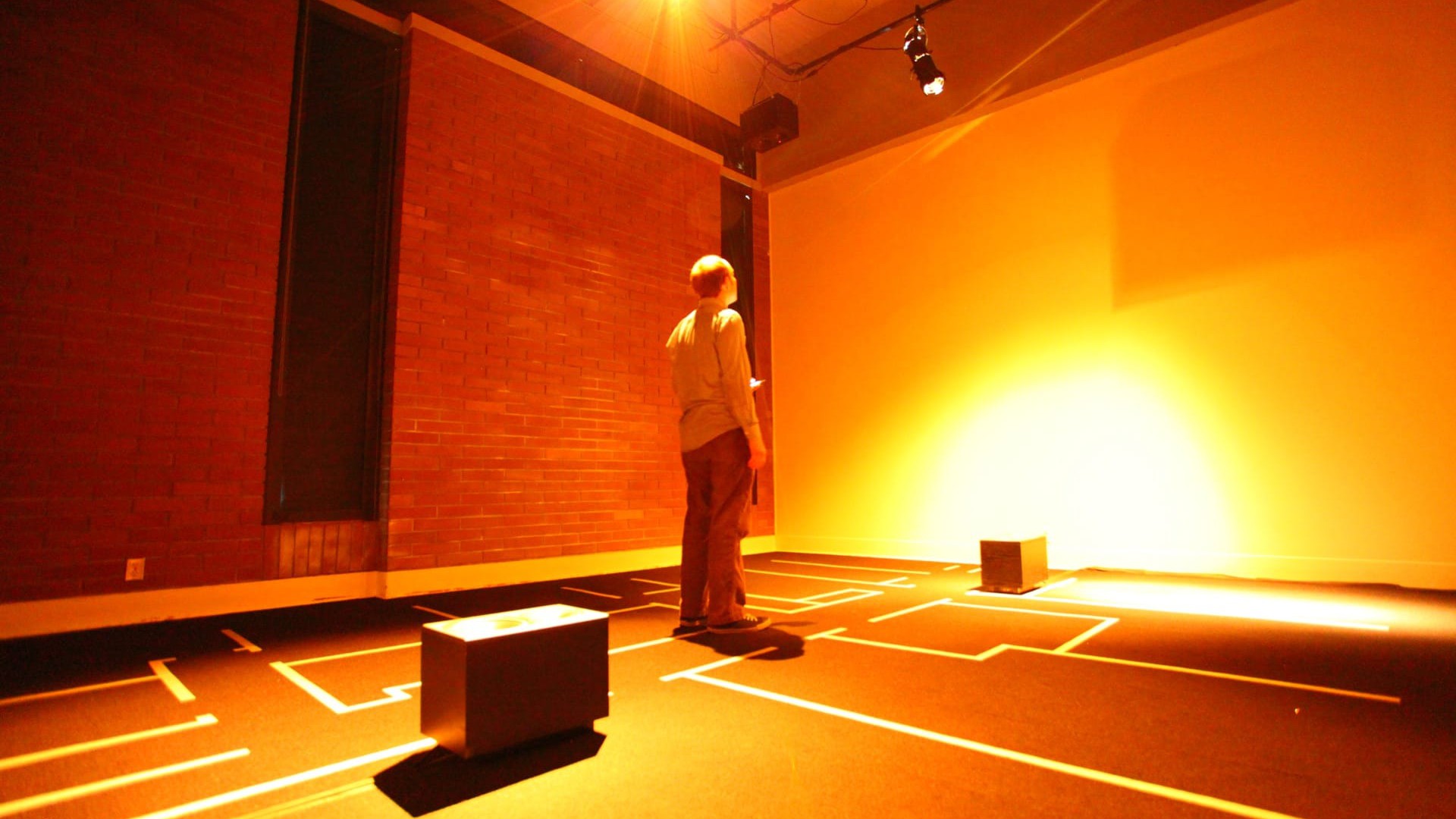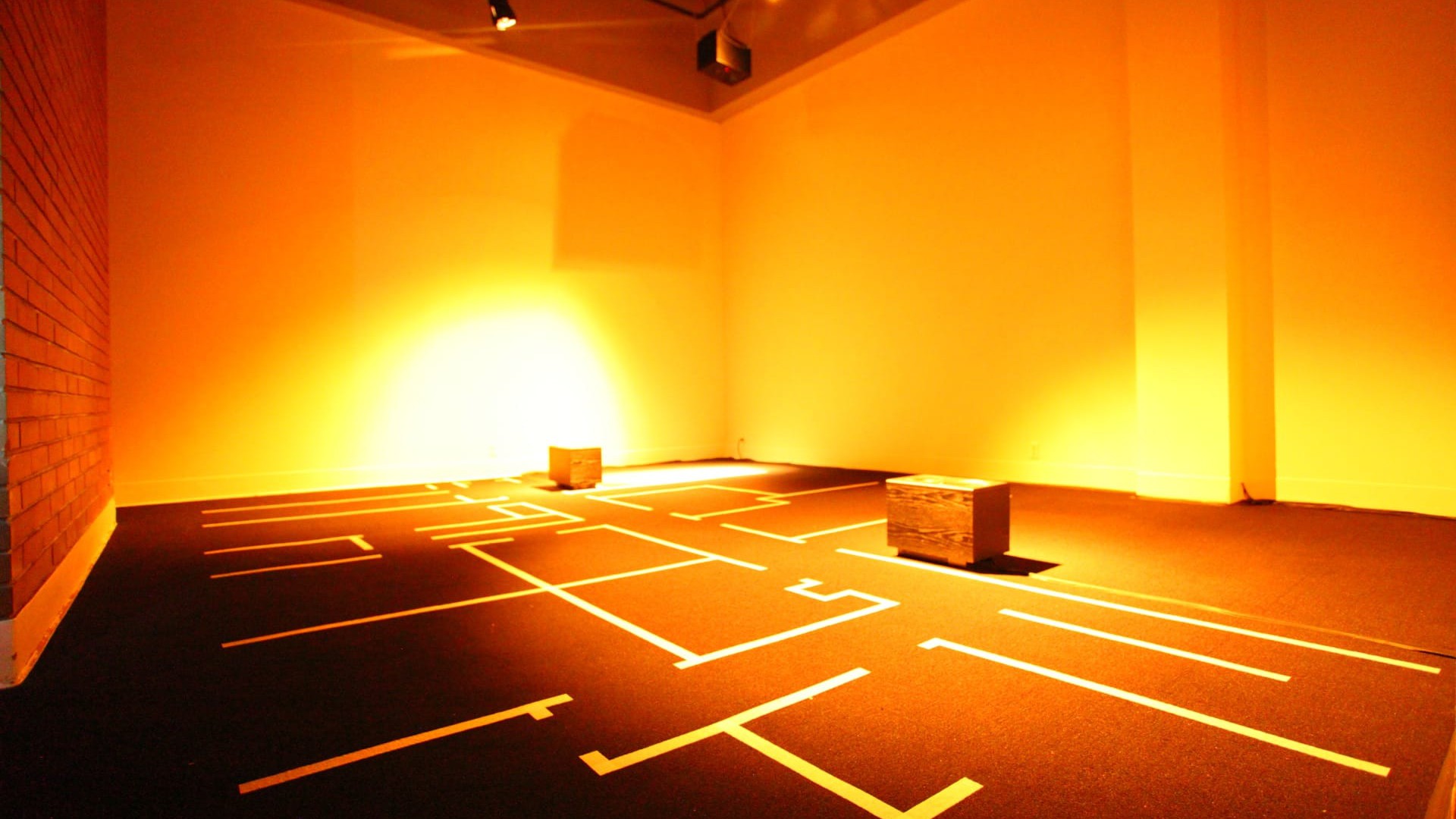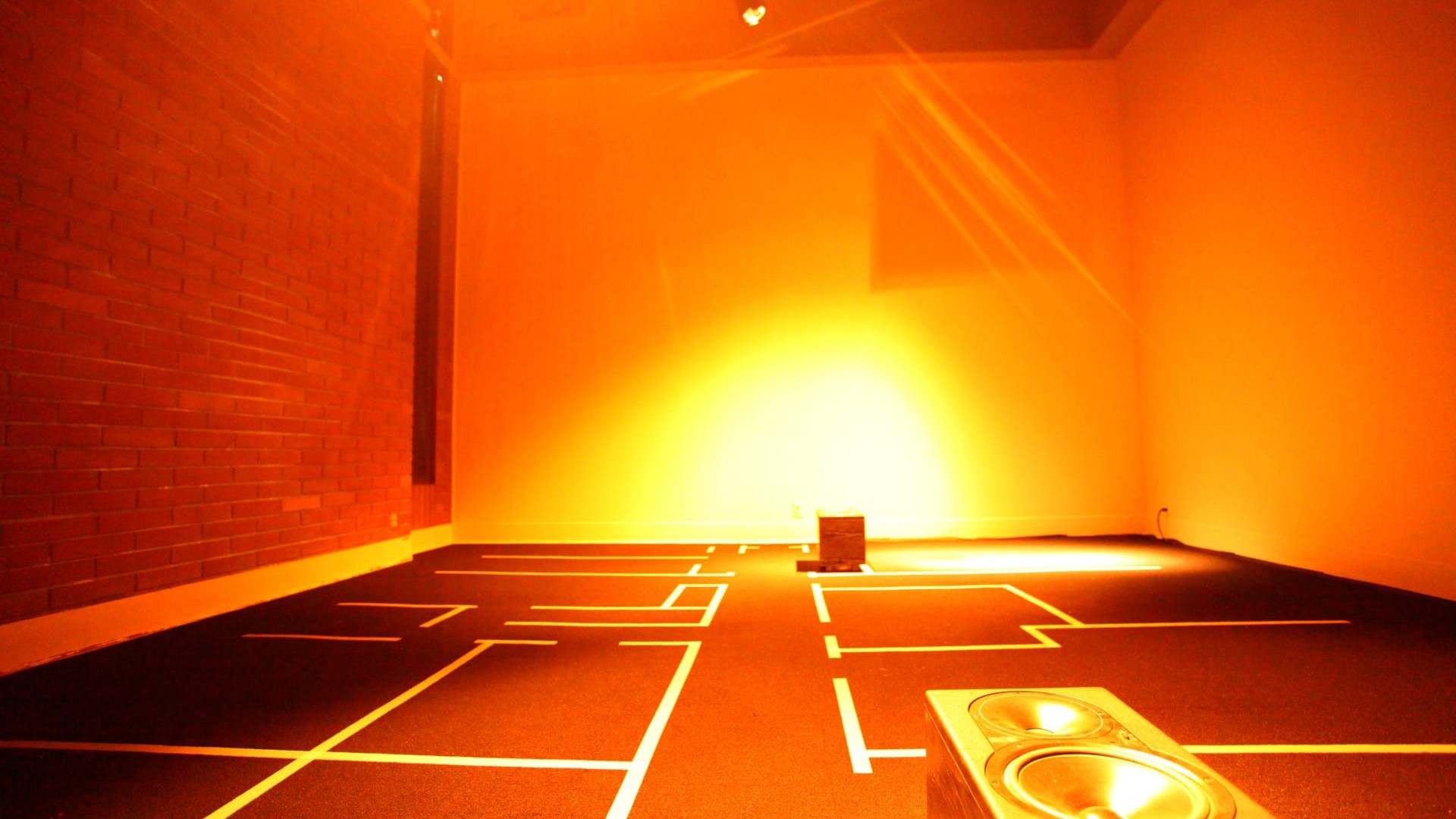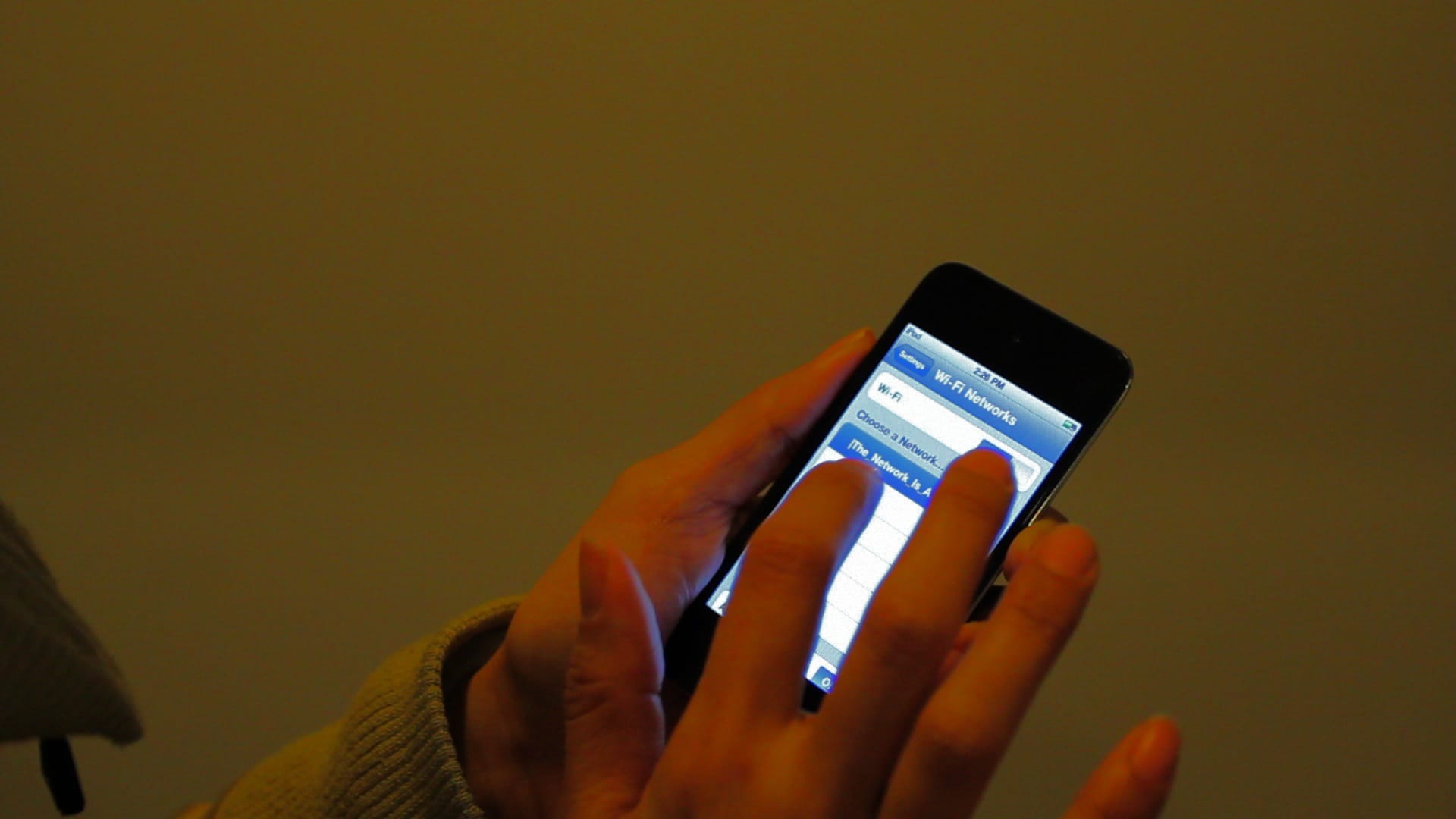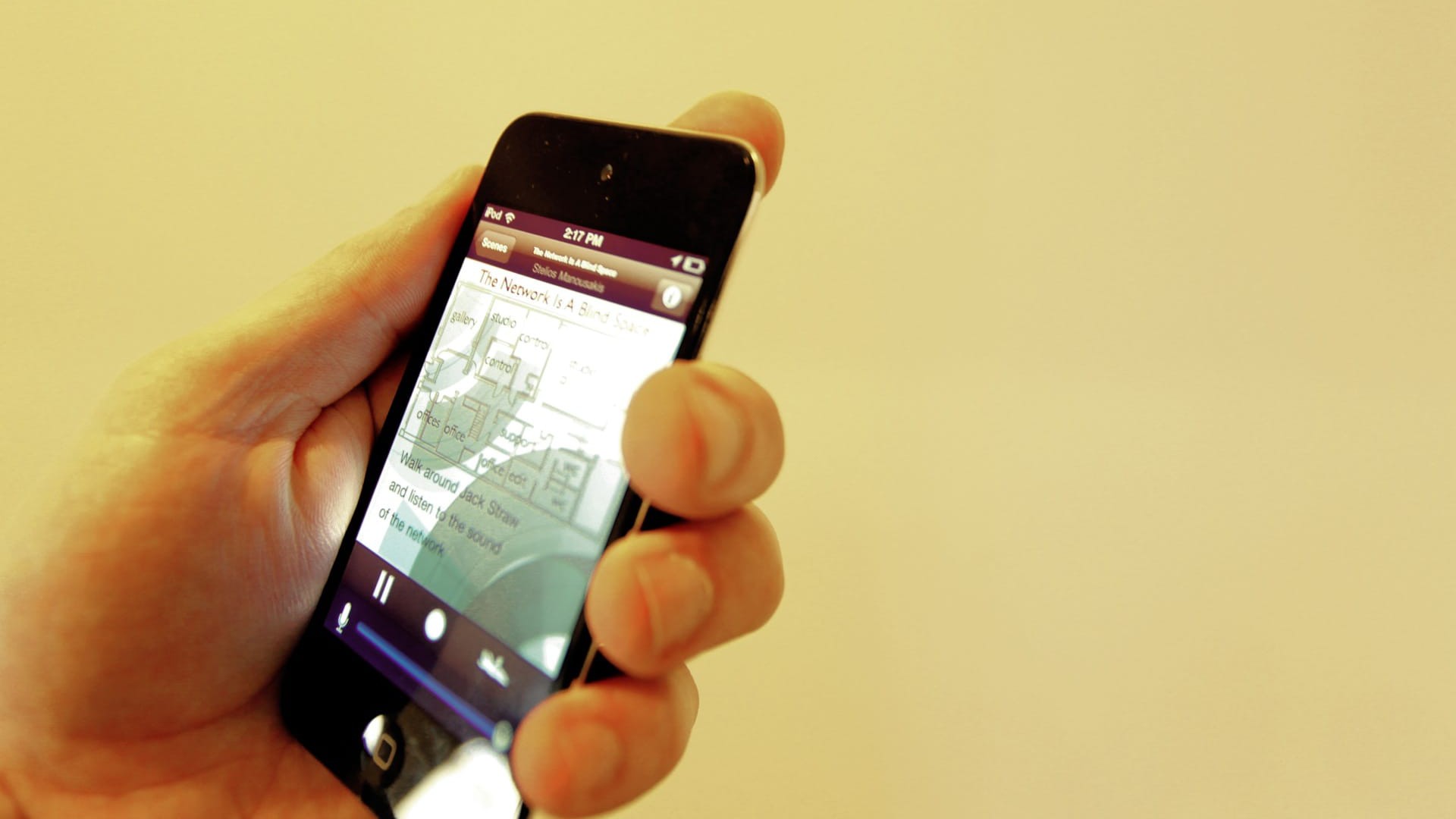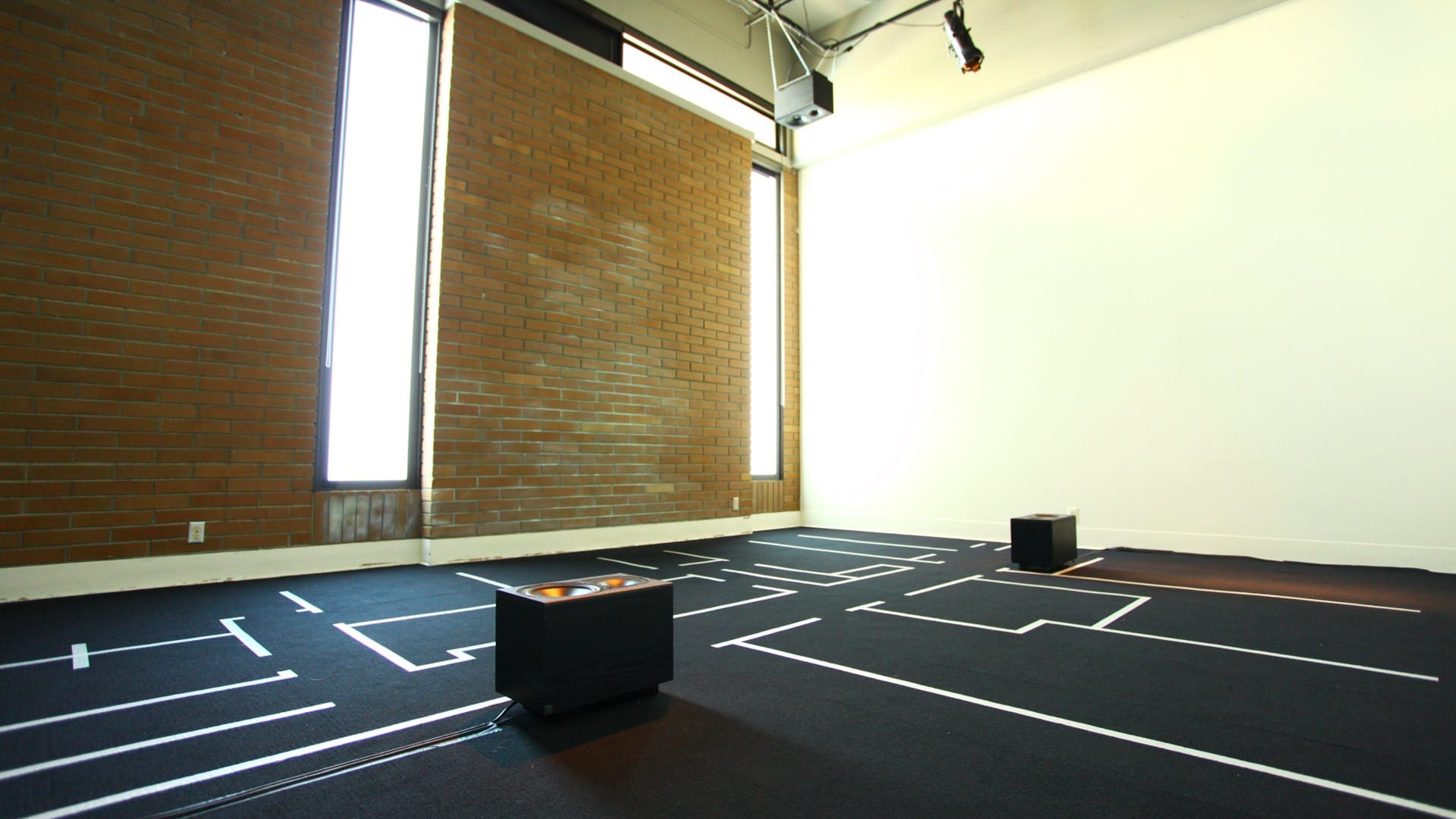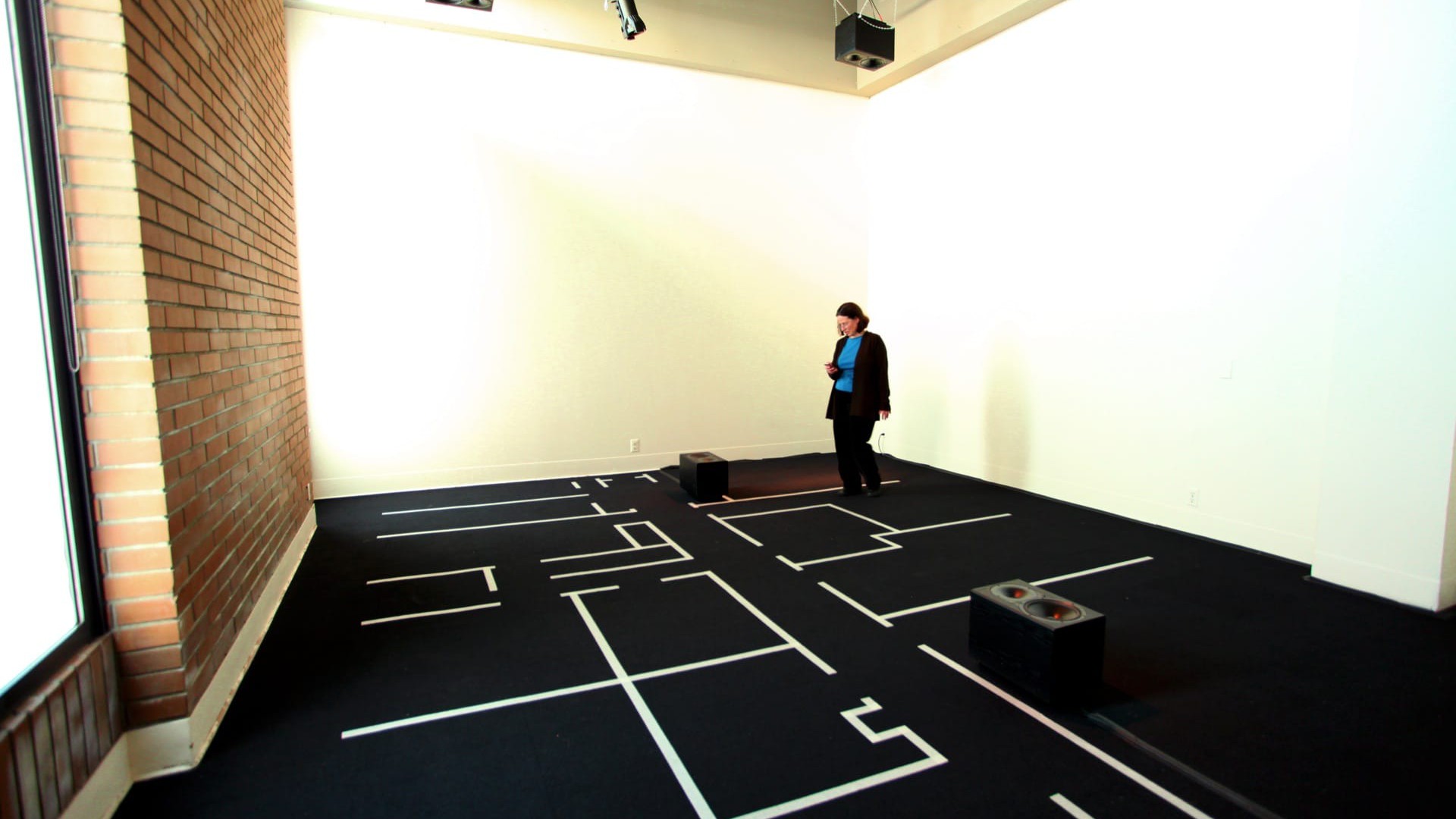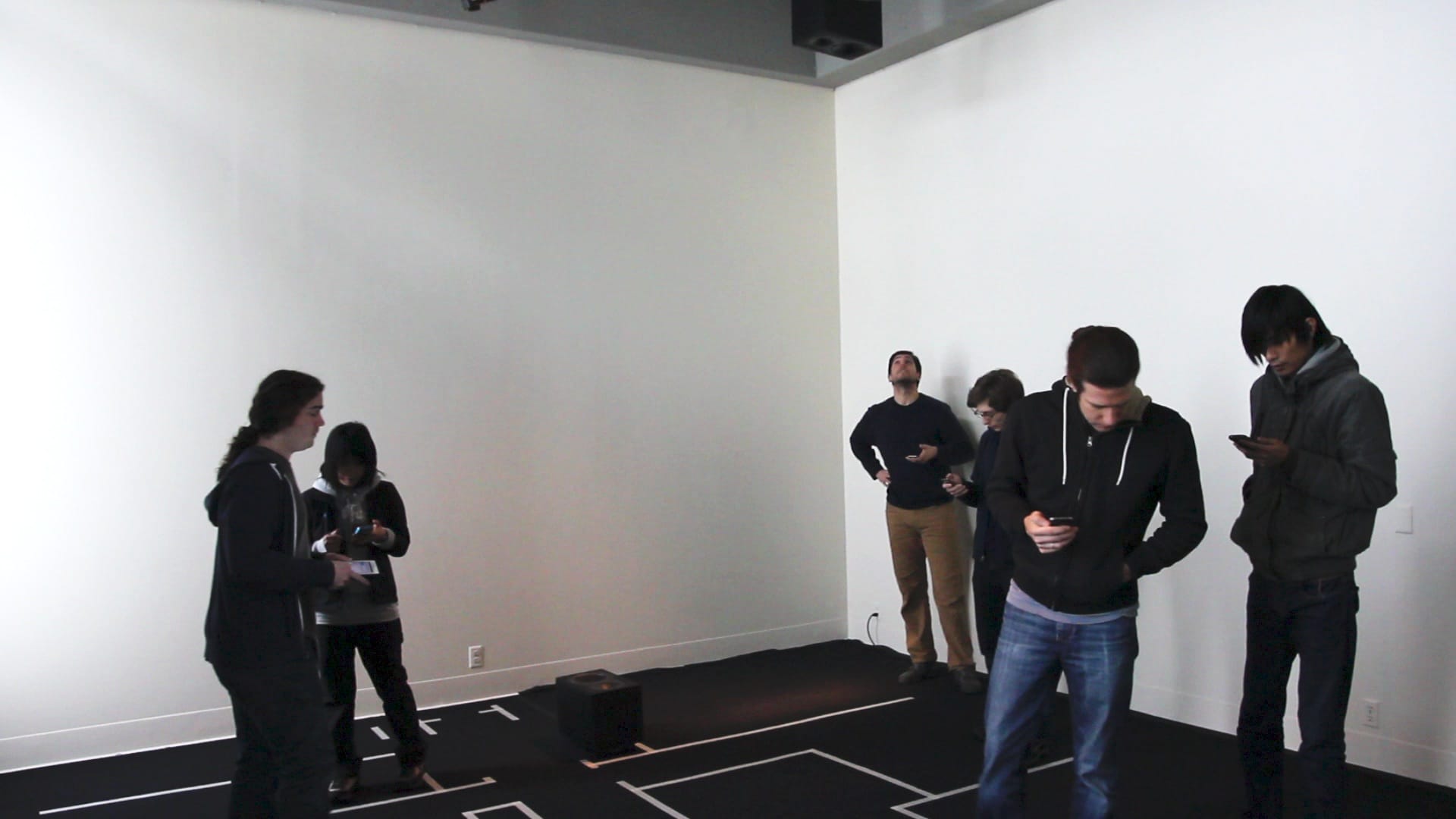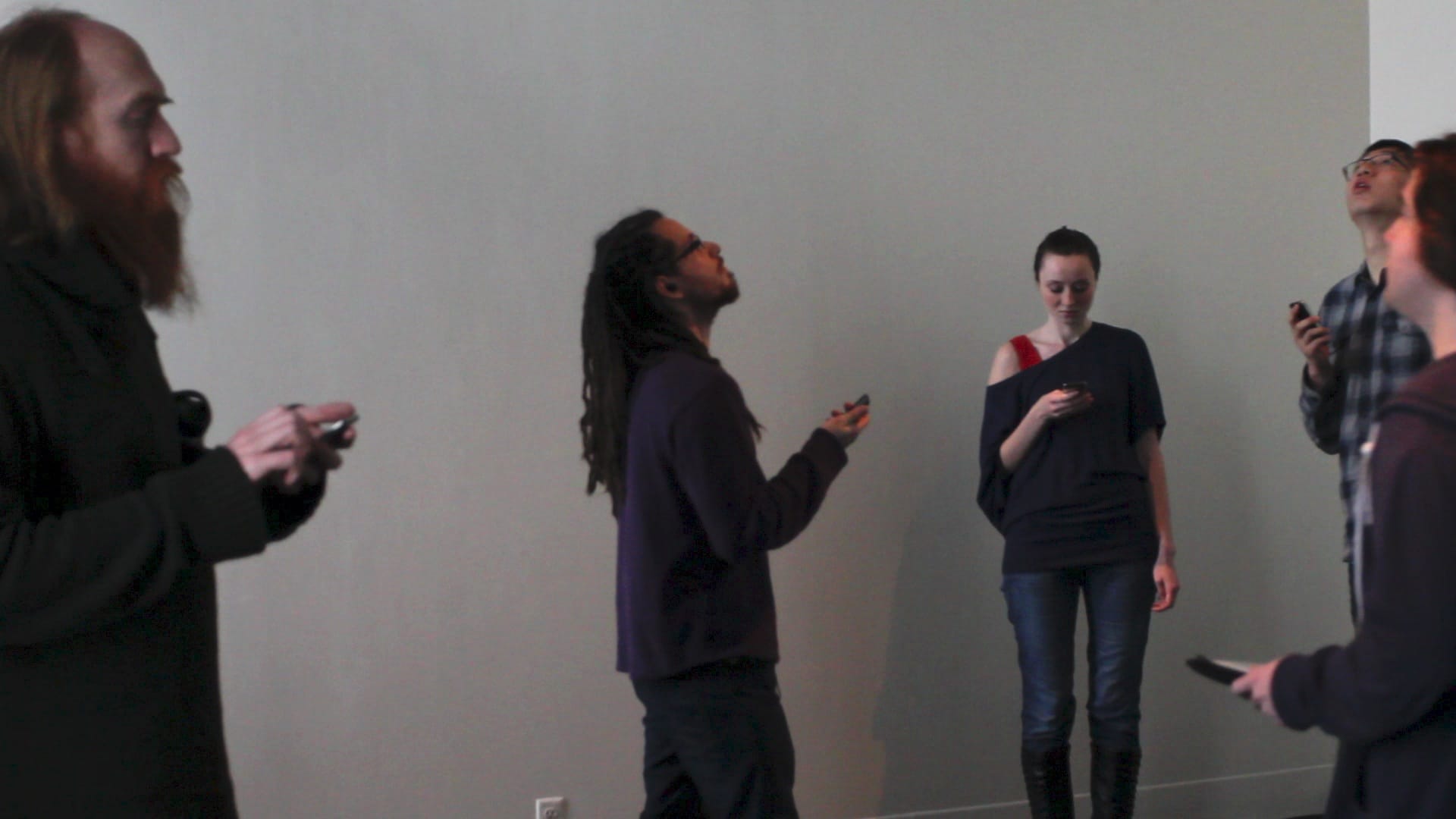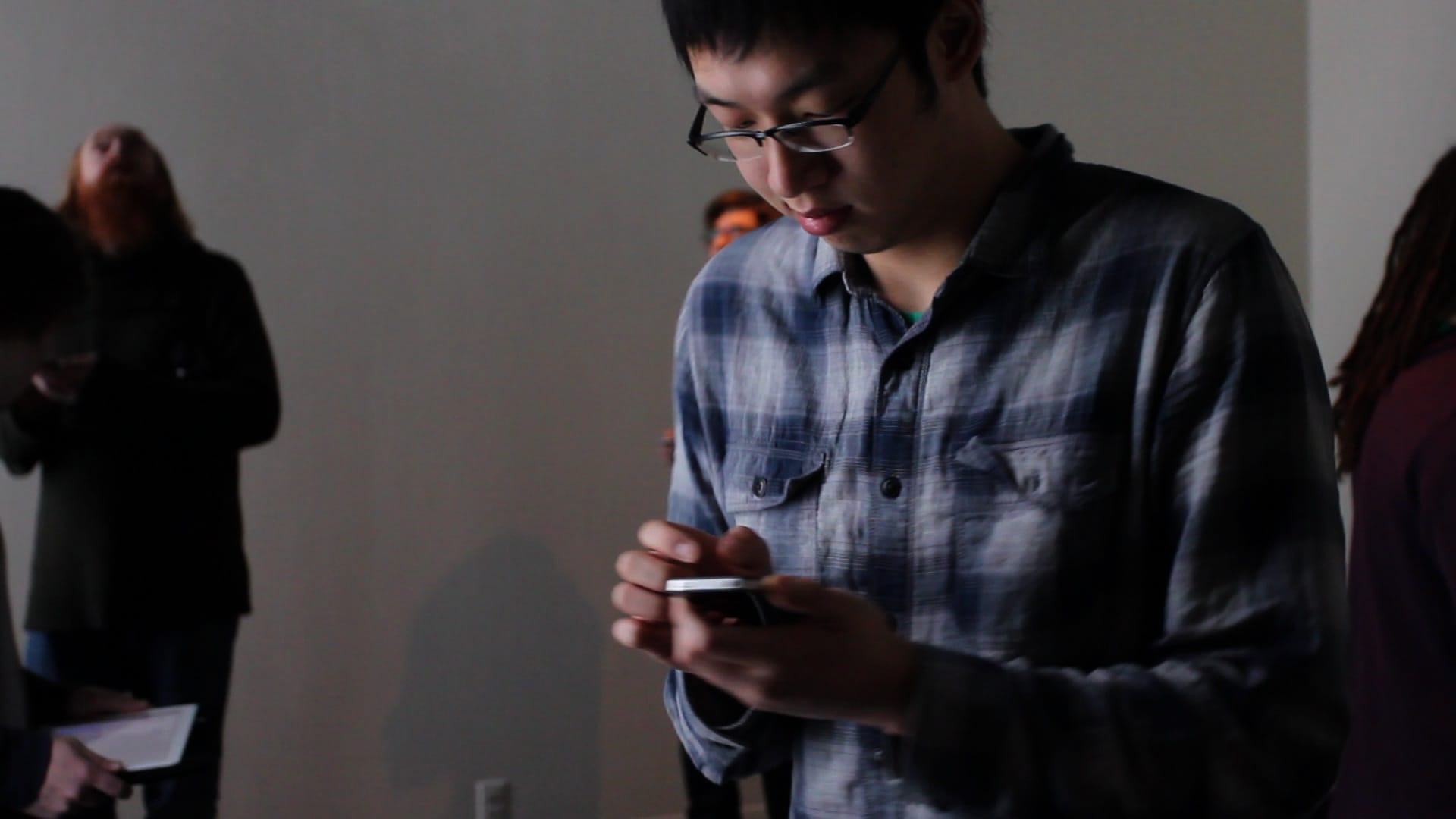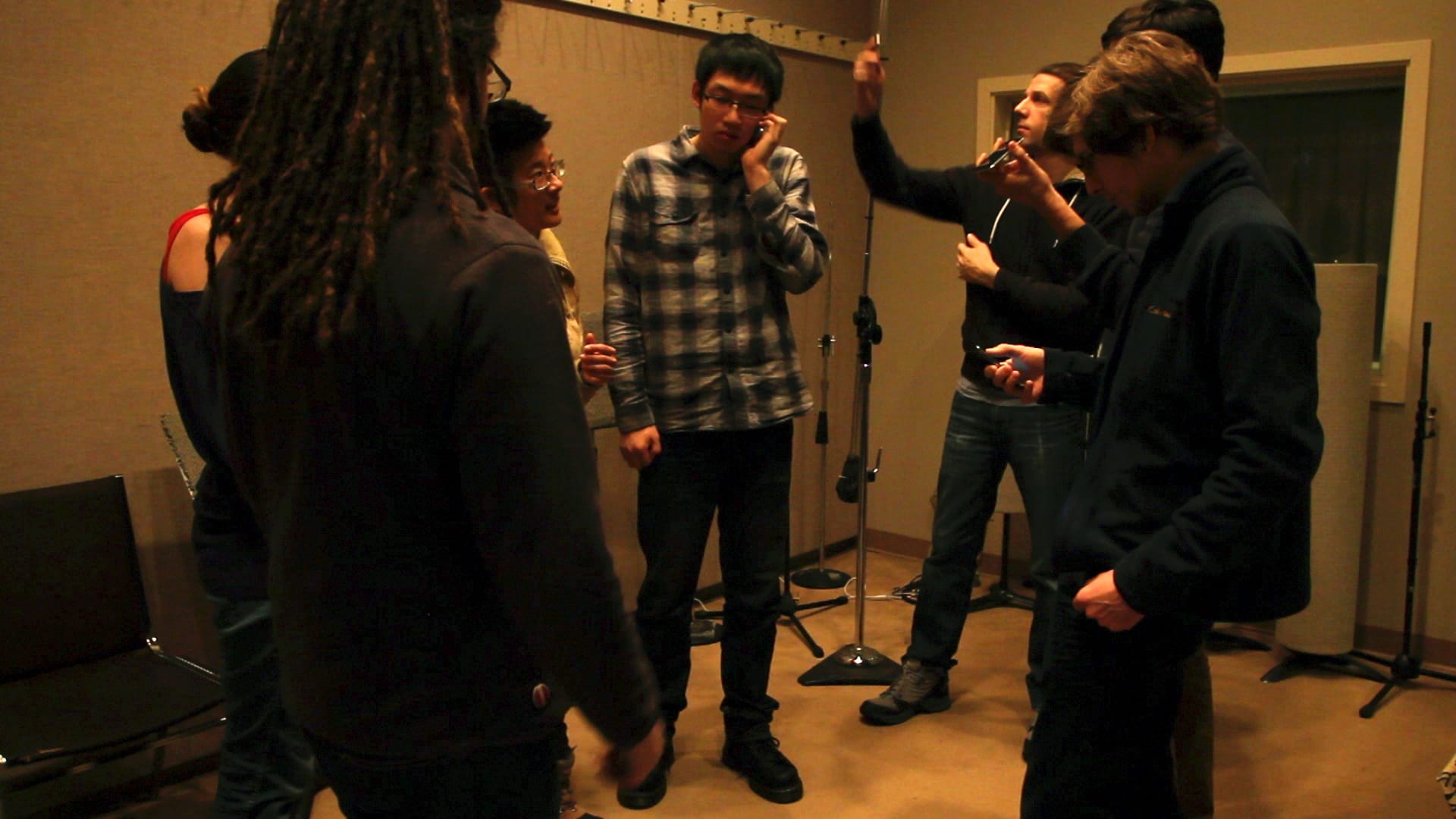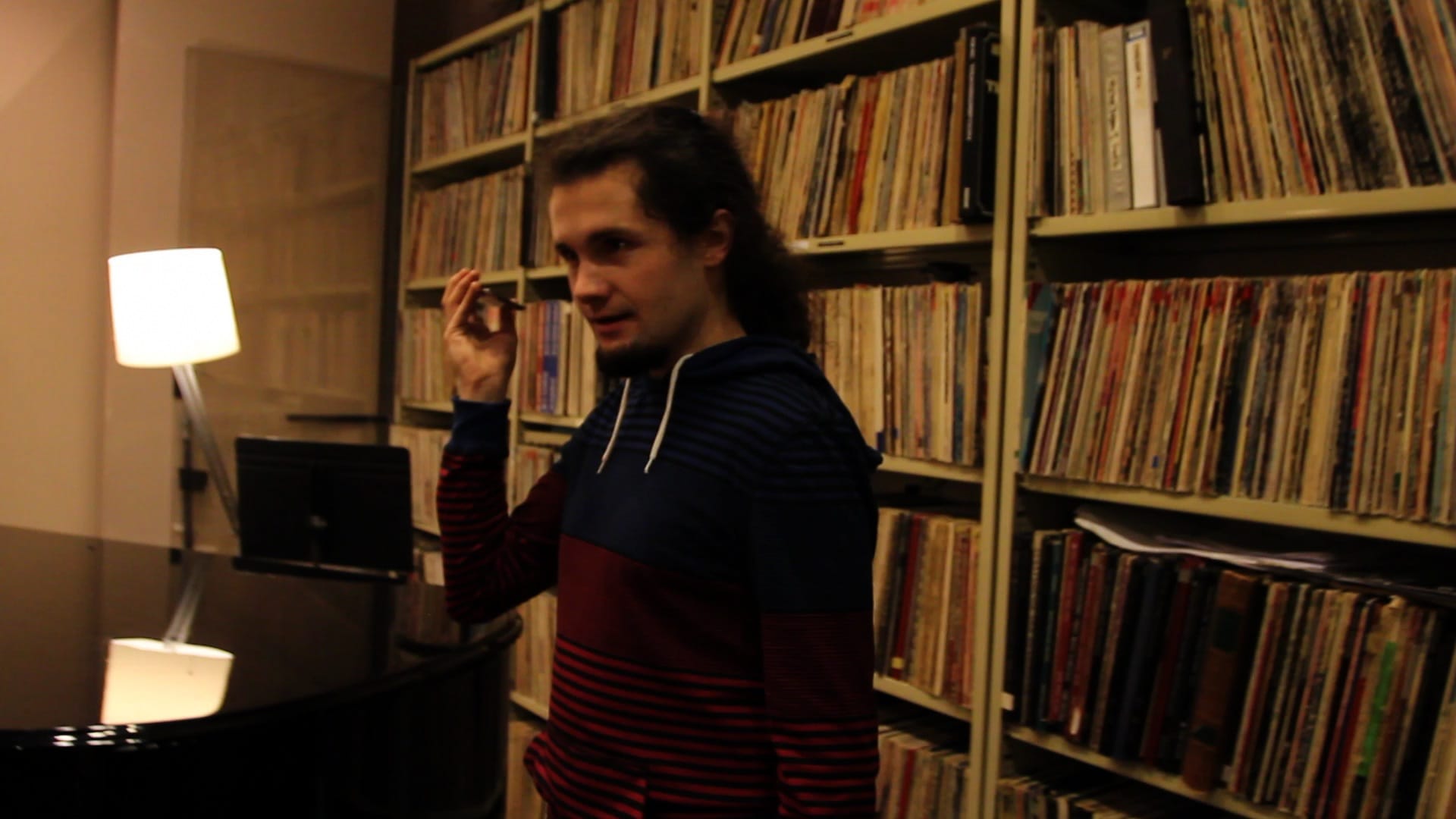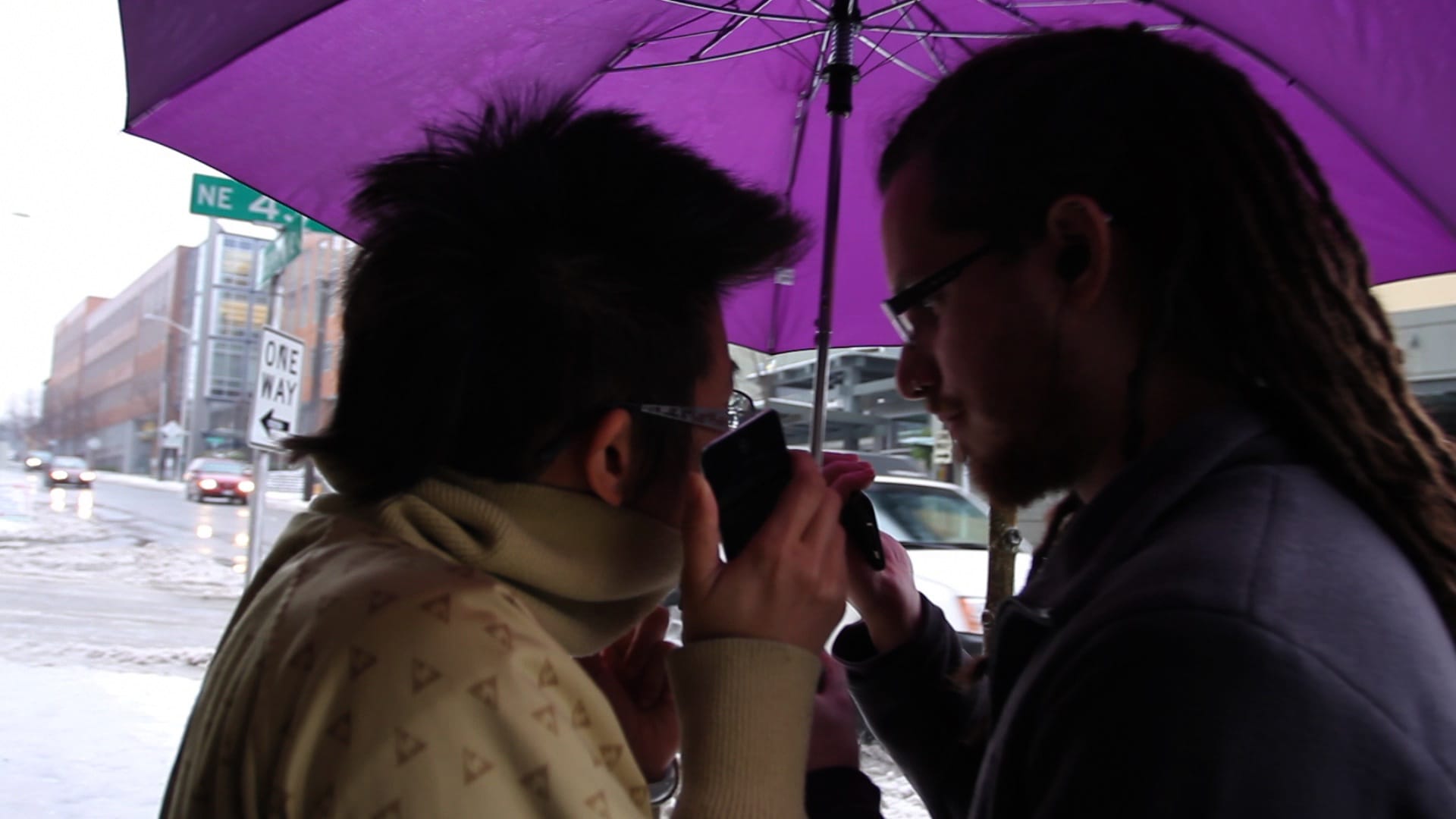a distributed, micro-telematic, interactive sound art installation
–
“Music is more than an object of study: it is a way of perceiving the world”
Jacques Attali, Noise: The political economy of music
The Network Is a Blind Space is a distributed, micro-telematic, interactive sound installation that explores the physical yet invisible electromagnetic spaces created by WiFi networks.
We make wide use of electromagnetic radiation in our daily lives and depend on it increasingly to wirelessly transmit and receive information of all sorts, for all sorts of uses. However, despite relying on this radio space that engulfs us, it can be difficult to truly understand its nature or even acknowledge its very physical presence in a manner that involves our bodies directly. Moreover, while wireless network spaces co-exist and interact with physical ones, they follow their own rules, which are not always intuitive from the point of view of every-day experience. To explore and navigate these spaces a new sense is needed, as vision falls short. In nature, many animals that inhabit environments where vision is not a sufficient navigational tool – such as bats and dolphins – have developed echolocation, transmitting sound and listening to the echoes of a space. The Network Is a Blind Space creates an electromagnetic musical echolocation system in which visitors can use WiFi-enabled mobile electronic devices (smartphones, iPods, tablets, laptops) to poetically and viscerally explore this hidden Hertzian dimension, as it exists within the particular space the piece is installed in.
The piece addresses the physicality of WiFi waves together with the deeply social nature of computer networks. It explores how such a network behaves inside a space, how it modulates the psychogeography of that space affecting visitor behaviors and interactions, but also how it reacts itself to visitor presence. To this extent, The Network Is a Blind Space reveals the network as a dynamic, navigable space, as an open score spread in that space, and as a large, invisible, collective idiophone – a collaborative distributed instrument which devices of connected visitors excite into resonance.
You can listen to an interview about the piece here.
| Year: | 2011-12 |
| Type: | Installation (interactive) |
| Description: | Distributed, micro-telematic, interactive sound art installation |
| Dimensions: | Variable, needs multiple rooms |
| Duration: | Variable |
| Capacity: | Variable |
| Materials/Media: | WiFi network, computers, WiFi-enabled mobile devices, loudspeakers, sound, lights, white painter’s tape |
| Software: | SuperCollider, Unix Shell networking tools, PureData, RjDj, Python |
| Photo credit: | Martin Jarmick, Vincent Hill, Stelios Manousakis |
Configuration
The Network Is A Blind Space extends as far as its WLAN can reach, inside the exhibition building, as well as outside it. It is meant to be installed in a space with multiple rooms, with one of them being the central listening area. The specifics of the layout depend on the particularities of the site; for example, during the Jack Straw New Media Gallery exhibit, (Seattle, USA, 09/12/2011-03/02/2012), two computers were installed near the opposite sides of a long corridor – the most prominent architectural feature of that building – to create an electromagnetic line-space that could be transversed and examined.
Read the NIME paper on the technology developed for The Network Is A Blind Space:

WLAN trilateration for musical echolocation in the installation ‘The Network Is A Blind Space’
New Interfaces for Musical Expression (NIME) 2012 ABSTRACT: This paper presents the system and technology developed for the distributed, micro-telematic, interactive sound art installation, The Network Is A Blind Space. […]
